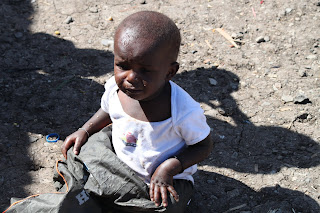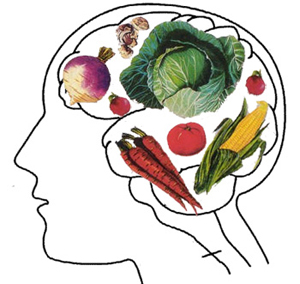Search This Blog
Wednesday, August 31, 2011
Why Vegetarians are Crazy: Part 2
Tuesday, August 30, 2011
Why Vegetarians are Crazy
- Strict vegetarian or vegan: A vegetarian diet that excludes all animal products such as meat, poultry, fish, eggs, milk, cheese and other dairy products
- Lactovegetarian: A vegetarian diet that excludes meat, poultry, fish and eggs but includes dairy products
- Lacto-ovovegetarian: A vegetarian diet that excludes meat, poultry and fish but includes eggs and dairy products. Most vegetarians in the United States fall into this category.
- Flexitarian: A semi-vegetarian diet with a focus on vegetarian food with occasional meat consumption.
Tuesday, August 23, 2011
Obesity Epidemic
OBESITY
It's a human health epidemic and it's amazing to me that you can travel 6 hours in a plane in any direction and witness the two situations. Gives new meaning to feast or famine.
Check out this website put out by the CDC. You can literally push "PLAY" on the map and watch Americans become more and more obese. http://www.cdc.gov/obesity/data/trends.html
Best Regards,
Tera Rooney
Wednesday, August 17, 2011
Hunger in the Horn

There is a thing in this world called hunger and it’s not something that most Americans deal with on a regular basis. There are 925 million undernourished people in the world today. That means one in seven people do not get enough food to be healthy and lead an active life. Hunger and malnutrition are in fact the number one risk to health worldwide — greater than AIDS, malaria and tuberculosis combined. We have taken for granted that when we go to the grocery store there will be food on the shelf. We no longer know where our milk, eggs, produce, bread and meat come from – as far as we are concerned they come from the store. We are out of touch. So what would we do if we went to the store and there wasn’t any food on the shelf? Go without eating? Are you kidding me?
If you’ve been keeping up on current events you know that there is a drought of horrific proportions going on right now in the African Horn. Somalia, Ethiopia, and the northern region of Kenya have been hit the hardest. There are over 1500 new refugees coming out of Somalia and into Kenya every day; this doesn't include the thousands who are going into Ethiopia. Almost 30,000 children under the age of 5 have already died of starvation, and it’s estimated that 12 million people are fighting for survival. I heard a story of a mother having to leave one of her children to die on the roadside in order to save the life of her other child on the 80 km walk to the Kenyan refugee camp – and that’s just from the border to the camp; she probably had to walk double that to get to the border from the Somali countryside. In another example from one of my Kenyan friends, he had to rescue a baby who was still clinging to life in the arms of her dead mother. You may not believe this, but it’s true – they are in a desperate situation and there is no end to it in sight.
There is food relief that is being made available to the refugees. USAID has invested 564,459,389 dollars in aid and private donors and NGOs (non-governmental organizations) are working tirelessly in an effort to get food supplies to this region. Organizations like NUMANA, based in Kansas, are taking an active role to try and engage in food aid relief. The trouble is that this is a temporary fix. What these countries need is greater investment in research and development of agriculture. More investment must be made in crops and growing practices that can better serve this type of environment – the same kind of research that allows America to have the most abundant food supply in the world.
I will be boarding a plane on Sunday to Nairobi, Kenya with my friend and coworker, Tyler Lund – we both work for Senator Moran. The Senator sits on the Hunger Caucus, so this cause strikes close to home both personally and professionally. Tyler has lived extensively in Kenya and is an expert in African agriculture and African production practices. During our time in Kenya we will be meeting with NGOs, government agencies, and refugees to identify current problems with the aid structure. There is also an opportunity for us to facilitate food aid ourselves. We are going to be working trough an NGO called First Love International to deliver food to the Dadaab refugee camp, which is currently housing around 417,000 people.
So when you eat dinner or go to the store this week, think about this: we are blessed. We are blessed with technology and production practices that allow us to feed a nation. We must continue to invest in agriculture if we are to feed a world. We aren’t doing it now, and the population is growing larger by the day – there is expected to be 9 billion people on this earth by 2050.
If you would like to get involved or learn more you can contact me or check out the links below.
Sincerely-
Brandon
http://www.usaid.gov/
http://firstloveinternational.com/
http://www.numanainc.com/
People Requiring Humanitarian Assistance in Kenya 3.7 million U.N. Agencies – July 29, 2011
People Requiring Humanitarian Assistance in Ethiopia 4.8 million U.N. Agencies – July 29, 2011
People Requiring Humanitarian Assistance in Somalia 3.7 million U.N. Agencies – July 29, 2011
People Requiring Humanitarian Assistance in Djibouti 165,000 U.N. Agencies – July 29, 2011
Number of Somali Refugees in Kenya 476,808 UNHCR1 – August 3, 2011
Number of Somali Refugees in Ethiopia 159,871 UNHCR – August 5, 2011
State Senator Speaks Out!
Nebraska State Senator Tyson Larson puts it best when he speaks out against the Humane Society of the United States. The HSUS plays on consumer misconception of their involvement in local humane society pet shelters to raise milions of dollars for the already large budget they operate on. What many consumers do not realize is that the HSUS shares less than 1% of it's annual budget with local pet shelters. Find out who runs the real show in your community and consider redirecting your donations to the right people.
Senator Larson tells it like it is in this article:
http://nebraskaradionetwork.com/2011/08/16/state-senator-calls-humane-society-of-us-dangerous/
Enjoy!
Tera Rooney
Tuesday, August 16, 2011
Television Debut
 |
Food For Thought is hitting the big screen this week on RFD TV. Please tune in to NCBA's Cattlemen to Cattlemen to see the feature they did on our group. Check out your local listings and tune in at the following times to catch the episode.
Airs Weekly on | Tuesday at 8:30 p.m. Wednesday at 10:30 a.m. Saturday at 9:00 a.m. (All Times Eastern) |
Log on to http://www.cattlementocattlemen.org/watchepisodes.aspx for more information online. Thanks for tuning in!
What is a factory farm?
I am an American.
I am a wife.
I am a mother.
I am a cattle caregiver.
I work at a CAFO.
I laugh, I cry, I love, I live, I care with every fiber of my being…
I hope that you think of me when you go the grocery store and look at the beef in the meat-case because it is people like me that care for cattle and raise beef
I am not a factory…
Thursday, August 11, 2011
150 Years of Kansas...

Monday, August 8, 2011
Ivy League Cowgirl
Watch the full episode. See more America's Heartland.
Hope you enjoyed the video as much as I did!
Chelsea
Friday, August 5, 2011
Dear Food Industry, Thanks for Keeping it Safe!
 We live in an increasingly digital age and it seems like information travels at the speed of light these days. As such, we are quickly made aware of foodborne illnesses both globally and domestic, and this attention is justifiably putting alot of pressure on food producers, processors and government agencies alike. Everyone will remember the recent outbreak of E. coli in Europe caused by bean sprouts that sickened over 3,000 people and killed 31.
We live in an increasingly digital age and it seems like information travels at the speed of light these days. As such, we are quickly made aware of foodborne illnesses both globally and domestic, and this attention is justifiably putting alot of pressure on food producers, processors and government agencies alike. Everyone will remember the recent outbreak of E. coli in Europe caused by bean sprouts that sickened over 3,000 people and killed 31. 


